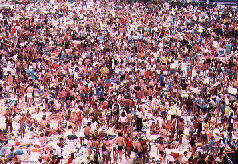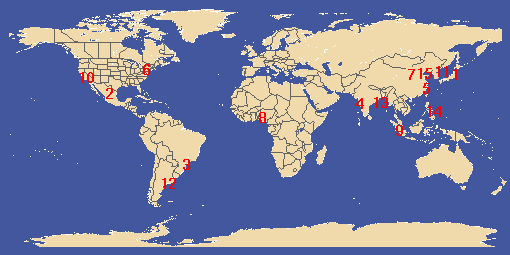
The text on this site is presented as an archival version of the script of "Ocean Planet," a 1995 Smithsonian Institution traveling exhibition. The content reflects the state of knowledge at the time of the exhibition, and has not been updated.
Fourth of July weekend, Absecon Island, New Jersey, 1983
photo © Michael Baytoff/Black Star
By 2000, 13 out of 15 of the world's largest cities will lie on or near coasts§:

1 Tokyo, Japan 27,956,000 2 Mexico City, Mexico 27,872,000 3 São Paulo, Brazil 22,558,000 4 Bombay, India 18,142,000 5 Shanghai, China 17,407,000 6 New York City, U.S.A. 16,645,000 7 Beijing, China 14,366,000 8 Lagos, Nigeria 13,480,000 9 Jakarta, Indonesia 13,380,000 10 Los Angeles, U.S.A. 13,151,000 11 Seoul, Korea 12,949,000 12 Buenos Aires, Argentina 12,822,000 13 Calcutta, India 12,675,000 14 Manila, Philippines 12,582,000 15 Tianjin, China 12,508,000
![]()
Compared to a person from India, a typical American uses§:
43 times more petroleum
184 times more natural gas
386 times more pulp wood (for paper)
![]() Ocean Planet Exhibition Floorplan
Ocean Planet Exhibition Floorplan
![]()